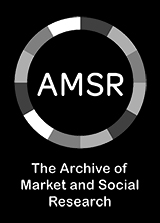What is intersectionality? And why you need to know
21 October 2021
This article was written by Judith Staig, founder of ContentWrite. It is sponsored by:

Professor Kimberlé Crenshaw made the news recently for receiving the highest award of the Association of American Law Schools the Lifetime Service award. You may never have heard of her, but her work will certainly affect you. Back in 1989, she established the concept of intersectionality and for the last thirty plus years she has been working to advance and define critical race theory [1] which, in some parts of the US in particular, is the subject of considerable controversy.
Professor Crenshaw coined the term ‘intersectionality’ in a paper that discussed legal cases such as that of the five Black women who sued General Motors in 1976: the company hadn’t hired any Black women before 1964 but when the recession hit in the early 70’s, lay-offs based on length of tenure (last in, first out) targeted them exclusively. The women claimed both race and gender discrimination, but the court refused to consider both of these issues together. Crenshaw argued that by treating Black women as purely women or purely Black, the courts repeatedly ignored specific challenges that face Black women as a group.
Put simply, intersectionality means that people in more than one minoritised group have different experiences of the world from people in only one of those groups; it is important because it relates to experiences of privilege in some cases, and discrimination or disadvantage in others. For example, a Black woman will experience gender issues differently to a White woman because of the intersection of race with gender; she will also experience racial issues differently to a Black man. The concept of intersectionality can apply to many of the different ways we can define ourselves including race, gender, sexuality, disability, religion, class, education, economic status and nationality – and this is by no means the full list.
Intersectionality remained a relatively obscure legal concept for some years but, more recently, awareness has taken off, together with the increased focus on diversity, inclusion and equality that has come in the wake of the #MeToo and #BlackLivesMatter movements. The feminist rallying cry of the 1970s, The Future is Female, which was co-opted by the 2016 Clinton campaign, has morphed into The Future is Intersectional - now available on T-shirts across the internet.
Intersectionality is relevant to everybody. We all experience privilege or disadvantage according to how the world is structured and we all work with, live with, know and love people who are members of a variety of different groups. The term ‘privilege’ can be contentious, but think of it this way: privilege means simply that you don’t have to overcome the obstacles that face people in other groups. For example, if you are not disabled, you have the privilege of not having to consider if everywhere you want to go is accessible. And if you live in the country in which you were born and raised, you have the privilege of just ‘getting’ the cultural references and linguistic peculiarities that can make people who come from other countries feel like outsiders.
As researchers, intersectionality is relevant as it’s only by considering different people’s needs and experiences that we can structure our organisations and create our workplace cultures so that they are fair and equitable, so everyone feels they belong and can go on to thrive and achieve.
The 2020 MRS survey into diversity, inclusion and equality (DI&E) in the market research sector emphasises just how different experiences can be for some members of the research community based on their demographic profile. The survey analysis explored intersectionality by dividing respondents (from large companies) into three groups.
- Type 1: White, male, straight and non-disabled.
- Type 2: White, female, straight and non-disabled.
- Type 3: Anyone belonging to a minority (based on their answers to questions about ethnicity, sexuality, faith and/or disability)
The findings showed that people who are members of Type 1 are having better workplace experiences than members of Types 2 and 3. Type 1 researchers feel a greater sense of belonging, believe that they have greater access to resources and are less likely to have experienced discriminatory treatment; Type 2 and Type 3 researchers are less likely to believe that DI&E is taken seriously or that their company’s workforce reflects the diversity of the community and Type 2 researchers are the most likely to have felt undervalued.
This is not a fair and sustainable way to continue. The goal of the MRS DI&E survey, launched in 2018, was to understand how issues of diversity and inclusion play out in our industry, so that we can work to improve. So much has been done in that time; the inclusion and diversity pages of the MRS website are both a testament to the work that has been put in and a source of information and ideas to help us all do more.
Part of doing more is that we need to understand why push-back against DI&E initiatives can occur, so that we can help to bring everybody on board. One of the critiques that is levelled at the notion of intersectionality is that it creates a hierarchy of victimhood – and consequential ‘special treatment’ - with White, straight, cis-gender, middle-class men at the bottom. But this is missing the point. Crenshaw herself says, “There have always been people, from the very beginning of the civil rights movement, who had denounced the creation of equality rights on the grounds that it takes something away from them.” The goal, she says, is not to create new power structures with Black women at the top but to do away with power structures and make room for “more advocacy and remedial practices” to create a more egalitarian system. Or, to borrow another T-shirt slogan, this is about equality, not revenge.
The future of the market research industry is intersectional. It’s not about guilt for your privilege, or about competing for who is worst off. It’s about listening to everyone’s experiences, being open to change and taking action to bring about that change. You can buy the T-shirt, but Kimberlé Crenshaw needs you to do a little more than that.
For more information to help you with inclusivity in your organisation, check out the resources available on the MRS inclusion pages.
[1] Critical race theory originated as a field of legal study in the 1970s and was concerned with how discrimination and inequity are perpetuated in the law, and how these inequities shape outcomes in society, the economy, culture and politics. More recently it has served as a framework outside of the arena of the law, for those trying to find ways of addressing racial inequities in other arenas, such as education. Critical race theory: the concept dividing the US - BBC News
Get the latest MRS news
Our newsletters cover the latest MRS events, policy updates and research news.










